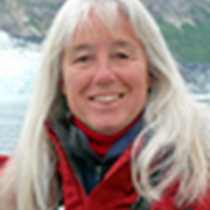Cabo San Lucas, San José del Cabo, & Gorda Banks
At sunrise, the National Geographic Sea Lion was positioned at the southernmost tip of the Baja California Peninsula – Friar Rocks, including the famous “El Arco” sea arch. The ancient granodioritic spine of the peninsula is exposed here. Brown pelicans clung to precipitous ledges; California sea lions lazed below the towering monoliths. A peregrine falcon was spotted perched near roosting great blue herons. Numerous sport-fishing boats zoomed past in a hurried, endless procession, headed seaward to try their luck with billfish and mahi-mahi. The appearance of Cabo San Lucas was a bit of a shock after the peacefulness and solitude of the past few days. No longer a sleepy fishing village, this town is now a busy tourist center.
A majority of guests were excited to try snorkeling around Pelican Rock this morning. Being our most tropical location, there were fish that will not be seen on the remainder of the voyage, such as the Moorish idol. Other fish species included yellow-tailed surgeonfish, Mexican goatfish, king and Cortez angelfish, guineafowl puffers, and a golden snapper. Big-belled jellies pulsed through the water, trailing long tentacles.
A smaller contingent of people rode to San José del Cabo, where an estuary attracts an abundance of birds. We had good luck in finding an endemic species – the Belding’s yellowthroat, as well as such colorful birds as northern cardinal, vermillion flycatcher, hooded, orchard and Scott’s orioles, and gila woodpeckers.
Leaving Cabo San Lucas, we cruised the productive waters along the broad base of the peninsula in search of marine life. A sea turtle, some devil rays, bottlenose dolphins, and… finally… some humpback whales showed up. A young calf and its mother were accompanied by an “escort” whale and also some playful dolphins. We deployed our hydrophone (an underwater microphone) and heard distant vocalizations of these famed singers.
A full moon rose in the east as the sun set in the west. An early dinner was planned in order to have the opportunity to view a lunar eclipse. Partially clouded skies had us worried as we sat down to eat, but at the time that it mattered, the clouds parted and the moon re-appeared. We witnessed the Earth’s shadow as it moved across the face of the moon. In the darkness of totality, stars emerged that would have otherwise been overwhelmed by the brightness of the moon. Gazing through the Milky Way into the past we look forward to future adventures.
At sunrise, the National Geographic Sea Lion was positioned at the southernmost tip of the Baja California Peninsula – Friar Rocks, including the famous “El Arco” sea arch. The ancient granodioritic spine of the peninsula is exposed here. Brown pelicans clung to precipitous ledges; California sea lions lazed below the towering monoliths. A peregrine falcon was spotted perched near roosting great blue herons. Numerous sport-fishing boats zoomed past in a hurried, endless procession, headed seaward to try their luck with billfish and mahi-mahi. The appearance of Cabo San Lucas was a bit of a shock after the peacefulness and solitude of the past few days. No longer a sleepy fishing village, this town is now a busy tourist center.
A majority of guests were excited to try snorkeling around Pelican Rock this morning. Being our most tropical location, there were fish that will not be seen on the remainder of the voyage, such as the Moorish idol. Other fish species included yellow-tailed surgeonfish, Mexican goatfish, king and Cortez angelfish, guineafowl puffers, and a golden snapper. Big-belled jellies pulsed through the water, trailing long tentacles.
A smaller contingent of people rode to San José del Cabo, where an estuary attracts an abundance of birds. We had good luck in finding an endemic species – the Belding’s yellowthroat, as well as such colorful birds as northern cardinal, vermillion flycatcher, hooded, orchard and Scott’s orioles, and gila woodpeckers.
Leaving Cabo San Lucas, we cruised the productive waters along the broad base of the peninsula in search of marine life. A sea turtle, some devil rays, bottlenose dolphins, and… finally… some humpback whales showed up. A young calf and its mother were accompanied by an “escort” whale and also some playful dolphins. We deployed our hydrophone (an underwater microphone) and heard distant vocalizations of these famed singers.
A full moon rose in the east as the sun set in the west. An early dinner was planned in order to have the opportunity to view a lunar eclipse. Partially clouded skies had us worried as we sat down to eat, but at the time that it mattered, the clouds parted and the moon re-appeared. We witnessed the Earth’s shadow as it moved across the face of the moon. In the darkness of totality, stars emerged that would have otherwise been overwhelmed by the brightness of the moon. Gazing through the Milky Way into the past we look forward to future adventures.



